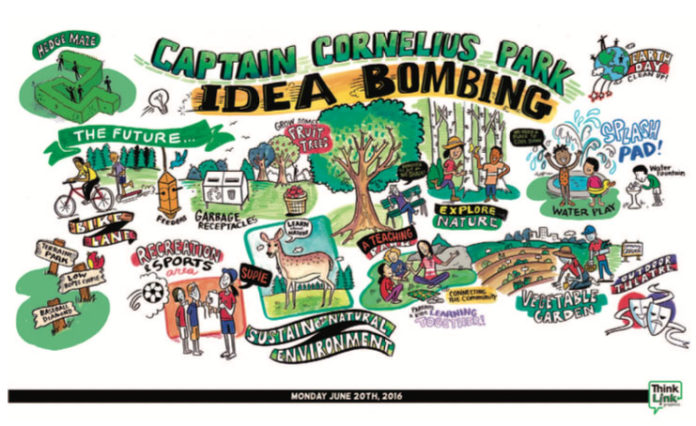Hamilton’s neighbourhood Action Strategy team will oversee the $2M earmarked to support neighbourhood development
The City of Hamilton as part of its Neighbourhood Action Strategy is committed to the motto “one person at a time”. Hamilton’s Neighbourhood Action Strategy (NAS) is focused on helping neighbourhoods be great places to live, work, play, and learn.The NAS
was launched in 2011 as a response to the social, economic, and health concerns within 11 of Hamilton’s vibrant neighbourhoods include Beasley, Crown Point, Davis Creek, GALA, Jamesville, Keith, McQuesten, Riverdale, Rolston, Sherman, and Stinson.The NAS has been involved in a variety of successful initiatives including the McQuesten Urban Farm; the Learning Annex initiative; Building Momentum Hamilton; and, the Neighbourhood Engagement Matching Grant Program (NEMGP).
The Neighbourhood Action Strategy team oversee the $2M earmarked to support neighbourhood development. To date, the City has expended or committed $1.75M from this fund which has leveraged $5.5M in direct investments from external sources – a nearly 3:1 return of City investment.
“We got our marching orders from City Council to go make these communities better and the way we have done that is to create capacity amongst residents and we’re here to support them along the way,” says Al Fletcher, Manager of Neighbourhood Action Strategy.“We have all these great programs going on but it’s about residents creating positive change and things like the McQuesten Urban Farm are simply the tools to get them engaged.”
The City of Hamilton provides the organizational administration and coordination support to many components of the Neighbourhood Action Strategy.These include neighbourhood action planning, action implementation, community development work, project development and management, policy support, grants funding, partnership initiatives, and evaluation.
Evaluation of program in 2015 by the University of Toronto and the Social Planning and Research Council of Hamilton noted that the NAS is changing the culture of community engagement in Hamilton and has opened new channels of communication between residents and the City. Planning teams acknowledge the importance of inclusion, reaching out to engage neighbours and ensuring meetings and events welcome to all.There also exists a sense that patience is important in this work, and that everyone is committed to the long game.
Funding partners – the City of Hamilton, the Hamilton Community Foundation, and Hamilton Best Start program – were joined by the Social Planning and Research Council of Hamilton (SPRC) in February 2014, who now provide oversight of the Community Developers involved with the project and of the Small Project Grants.The Small Grants Project Funding is to be used to support projects identified by resident members/groups as a way to get new ideas and people working together on projects within any of the 11 neighbourhoods. Each neighbourhood neighbourhood/hub has up to $5,000 to spend on local projects. Each project or activity can apply for up to $1,500 per project per year.
“I remain amazed with the commitment of residents to support improvements to their individual neighbourhoods as well as the community partners who step up to support the resident-championed actions,” says Fletcher. “It is also evident that our own City of Hamilton Departments are changing their service delivery methods to meet the needs of the neighbourhoods and without hesitation be there to support residents’ actions.”
Today, residents have identified a need to review and renew their plans; therefore, throughout 2016 and 2017, the 11 neighbourhoods will be updating the work plan components of their plans to validate, revise and determine their priority actions moving forward.
















